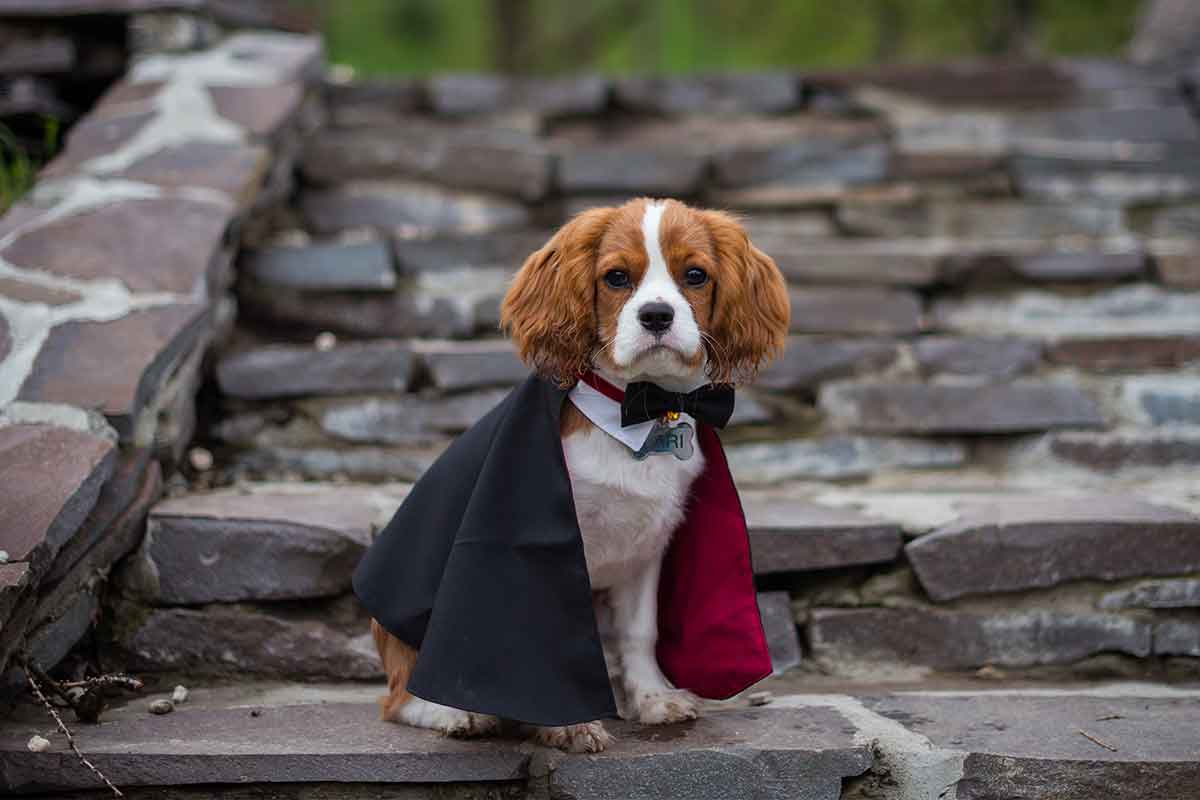Blah! Blah! It’s scary out there—all those pets dressed up as dinosaurs, lions, and spiders. And if you dress up your pet, you’re not alone, as more than 4.2 million dog-owning households and nearly two million cat caretakers will be treating their furry (and costumed) companions to ghoulish goodies and grisly toys this Halloween, according to the National Retail Federation.
Pet parents will spend more than $440 million on Halloween, according to the NRF. That’s about double the amount pet owners spent in 2010 when NRF first began to ask about pet costumes.
Twenty years ago, few pet costumes were even available at retail stores. Today, Petco and PetSmart each carry well over 100 costumes, mostly for dogs but also cats, and even Guinea pigs and ferrets can get into the Halloween spirit.
The costume trends, in general, match what kids want. Though it’s unclear if pets really “want” these costumes in particular or want any costumes for that matter.
“Superheroes are especially popular for pets and so is anything with a Star Wars theme,” says Gabby Roderer, pet living manager at Chalet, in Wilmette, Illinois.
According to the NRF, here are the top five pet costumes last year:
- Pumpkin
- Hot dog
- Lion and Pirate (tie)
- Bumble bee
- Devil
Sometimes pet caretakers have a devil of a time persuading the pet to wear the costume.
Fear Free is all about allowing pets to make choices, so they are less likely to be anxious. Never force an unwilling pet to wear a costume.
That said, with positive reinforcement some pets can learn to tolerate or even enjoy costumes. Here are some tips.
Don’t put on the costume all at once. Instead, slowly get your pet acclimated to it, and pair the experience with wonderful treats. Put one leg in and offer lots of praise and treats on Monday. Tuesday, it’s two legs and praise and treats, and so on.
Once your dog or cat is completely costumed, offer a meal so the pet associates wearing the costume with something very good. After several tries, many pets are excited because they know a good meal is happening at any moment after the costume goes on.
Ensure that all costumes are roomy enough for comfort, but not so roomy that the pet can slip out of them. And pets should never wear masks.
With praise and some patience, many pets will soon adjust their attitudes and tolerate a costume. And some actually enjoy it when family members dote on them. What Bulldog doesn’t love hearing how gorgeous she looks dressed as a ballerina?
However, other individuals, no matter what you do, just aren’t going to be convinced that wearing a costume is a good idea. They may even look humiliated, perhaps because they are. For those animals, the best hope is that you can return the costume for your money back.
It’s unfair to continue pushing the issue; instead, try a compromise.
Bandanas can substitute for a more elaborate costume, and most pets tolerate them. “You can also purchase a pet bow tie and slip it over the existing collar the pet is accustomed to wearing, and now the dog has a bit of fashion without even knowing it,” Roderer says. “Similarly, bat wings just lay on a dog’s back, and it’s a non-invasive choice.”
Even some pets who love wearing the costume indoors may not be happy about joining the entire neighborhood of screeching children trick or treating. Pay attention to what your dog is telling you. It’s perfectly acceptable to take pictures of your dog in costume but then leaving him at home.
For dogs who do join trick or treaters, here are some safety tips:
- Keep your dog on a leash. A retractable leash is not recommended because trick or treaters can trip over the extended leash, especially in the dark.
- If your dog shows any signs of fear, anxiety, or stress, trick or treating may not be your dog’s bag. Barking (when your dog typically might not bark), lunging on the leash, a tucked tail, and persistent yawning are all among the signs to watch for. Much more can be found in the book, “From Fearful to Fear Free: A Positive Program to Free Your Dog from Anxiety, Fears and Phobias,” by Dr. Marty Becker, Dr. Lisa Radosta, Dr. Walliani Sung, and Mikkel Becker.
- Check the bag. These days, people even offer dogs trick or treat goodies. Remember a 20-pound dog should only have so many biscuits, just as an 8-year-old child should have only so much candy. If you have any doubts about a treat, toss it.
Happy Howl-o-ween!
This article was reviewed/edited by board-certified veterinary behaviorist Dr. Kenneth Martin and/or veterinary technician specialist in behavior Debbie Martin, LVT.








